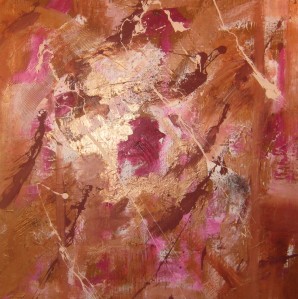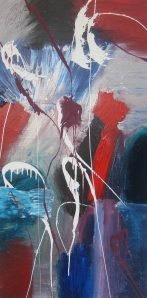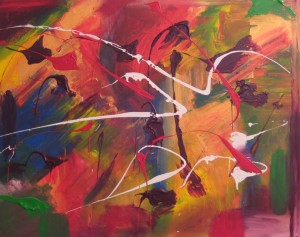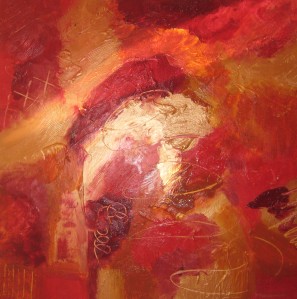January 8, 2010
Abstract Expressionism: Wassily Kandinsky
Wasilly Kandinsky (1866 – 1944) was born in Moscow and considered the founder of abstract painting. Representational elements of his painting disappeared in the 1920s.
At that time, he introduced geometric forms which became strictly abstract.
Kandinsky released art from its traditional duty. While other artists similarly experimenting with the dissolution of the object and the promotion of color and form to means of expression in their own right, Kandinsky was the most logical and consistent in his pursuit. He made it his life’s work to carry painting up to and over the threshold of abstraction, whereby his artistic activities were always accompanied by theoretical reflections and insights.
Music, as a form of art free from all obligations to the outside world, provided him with both a point of orientation and a yardstick in his observations on the “sounds” of colors. Kandinsky envied music for its independence and the freedom of means of expression. He attempted to establish what he called a “theory of harmony for painting” comparable to that of music.
Kandinsky’s abstract works continued up until 1933, when he moved to France and became influenced by Mirợ.
Composition VI (1911) is one of my favorites. I also like Composition VII (1913).
Featured Artist: Diane Clement, Richmond, VA
Diane Clement is yet another gem I found on Facebook. I have always loved her confidence and her bold style. It is not uncommon for Diane to use found objects or even to burn pieces of her art for effect – just because she feels like it. And Diane is no stranger to awards and shows. There was a wonderful article written about her in the Richmond Times- Dispatch. I encourage you to read it.
Diane believes abstract art comes from the soul. “My work as been described as ‘Freedom Made Visible’. Is it brave? Is it crazy? I think it’s both.
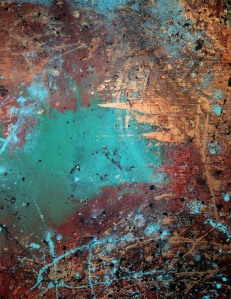
Artist by birth, I studied what my Mother painted…realistic work. I spent years drawing hands and eyes and trees. I started throwing paint when I was 14 years old. It was the most amazing feeling in the world.
I do not suffer the constraints formal training provides, the constraints of painting like my teacher or painting with the products used in formal training. I am also not concerned by the expectations placed on artists by day to day society. I have the luxury of painting from my soul with little or no restrictions.
The process is how I learn, how I grow. Each painting is part of my process. I hope only that as one abstract artist, I will contribute to the art as a true painter. I’m not out to change history, to save the world or to influence people or to make friends.”
Diane said, “There is no need to be intimidated by artists. Look, admire, ask. Art is like your favorite wine. It doesn’t matter what kind or how much it costs, the best art is the art that you like.” Enough said.
You can learn more about Diane and see more of her work on her web site.
What I’ve Been Up to Lately:
I haven’t been painting lately due to the cold of my garage. The house is too small to bring anything inside minus some tempera paints and paper. I have also been delaying my happiness for various reasons. I am planning an out-of-state move to a slightly warmer climate, and plan to start anew with new canvas and paint.
Here’s the most recent painting. It is called “Uneasy.” I was feeling that way so I decided to paint what that felt like.

Poem of the Month:
Clove
It’s one of those clear Fall nights
where you feel you can slice the moon
and eat it with a knife and fork
my clove cigarette crackles like a comforting fire
I am in and out with my usual burning desires
my mind goes to gentle things
streams and falls
cascading water taking me at will
I don’t need gloves, I am warmed by the coffee cup
in and out of stores, looking for inspiration
in faces and places
beat beat beat of the drum
melodic escape
where i’ll end up I don’t know
but it’s not here
i’m tired,
oozing out of my skin like that last bit of toothpaste
street sounds are like caramel for my ears
cjh
2008
